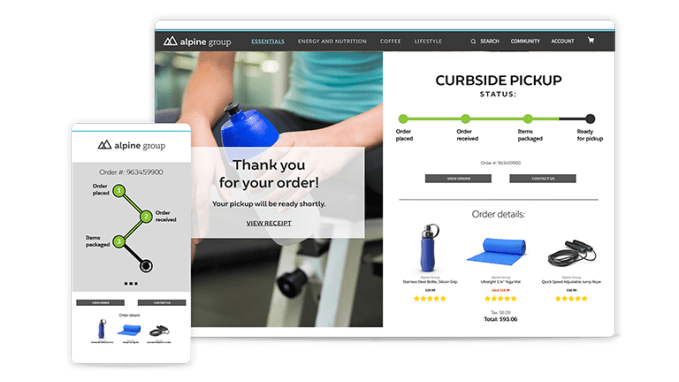As we move deeper into the pandemic, it’s clear that the way we conduct business is changing, maybe forever. That means that business has to change too — and fast. But if you’ve never conducted business digitally or only nominally, how do you suddenly transform on the fly?
Salesforce Commerce Cloud CEO Mike Micucci says that they were hearing from customers they needed help. Salesforce decided to build four packages of services very quickly for customers specifically designed to help conduct business during COVID-19. The company even has SI partners who will run everything for the first three months, so these businesses don’t have to do much of anything except turn the key (so to speak).
The four tools are part of the Salesforce Quick Start Commerce Solutions and include Quick Start Commerce for D2C Consumer and Essential Goods to get a site up running fast, Quick Start Commerce for Grocery and Food Service to help restaurants and grocery stores set up online curbside food purchasing systems, Quick Start Commerce for B2B for companies setting up business-to-business sites and Quick Start Commerce for Buy Online and Curbside Pickup, which enables non-food companies to move in-store inventories online, and arrange curbside pick up systems.

Quick Start Commerce for Buy Online and Curbside Pickup. Image Credit: Salesforce
Micucci says that online commerce has been operating at a holiday kind of surge since we went into lockdown 10 weeks ago and customers have been clamoring for help. He said that they responded initially with a series of materials on best practices for getting online quickly, but customers wanted something more concrete.
“We needed to bring the software to bear on this. So we designed these four quick start packages. Essentially, the whole model was that we need to get you running in weeks, not months. The goal was literally [to get you up in] two weeks, and included software, obviously our cloud-based commerce and whatnot, but more importantly it included a package of services,” Micucci explained.
To build that package, it involved more than just Salesforce itself. It needed to get partners involved too to include payment, shipping, order management and other related kinds of tooling, depending on the package requirements.
Finally, they wanted to even remove the site management headaches from the customer, at least initially. Understanding that it would be difficult for businesses to train people internally to manage the system at this time, they got systems integrators involved to do it for them for the first three months. If the customer wants to take over sooner, they can, and if they want the SI to continue to manage the whole thing, that’s fine too.
As Salesforce itself moved out of the office and home, it was observing that online sales were spiking, and Micucci says after a couple of weeks of making sure the workforce was settled, he started hearing from customers about the problems they were having conducting business, and they went to work. The first of these packages came together in just a couple of weeks including partners.
They got them out to customers for quick Beta testing and refinement to the extent they could, but the guiding principle in producing these packages was speed over perfection. They realize the products will very likely require further refinement as they get out into the field, but they learned you can produce a package to meet a pressing customer need, and do it quickly, and that’s a lesson that will likely resonate even after this crisis is over.
